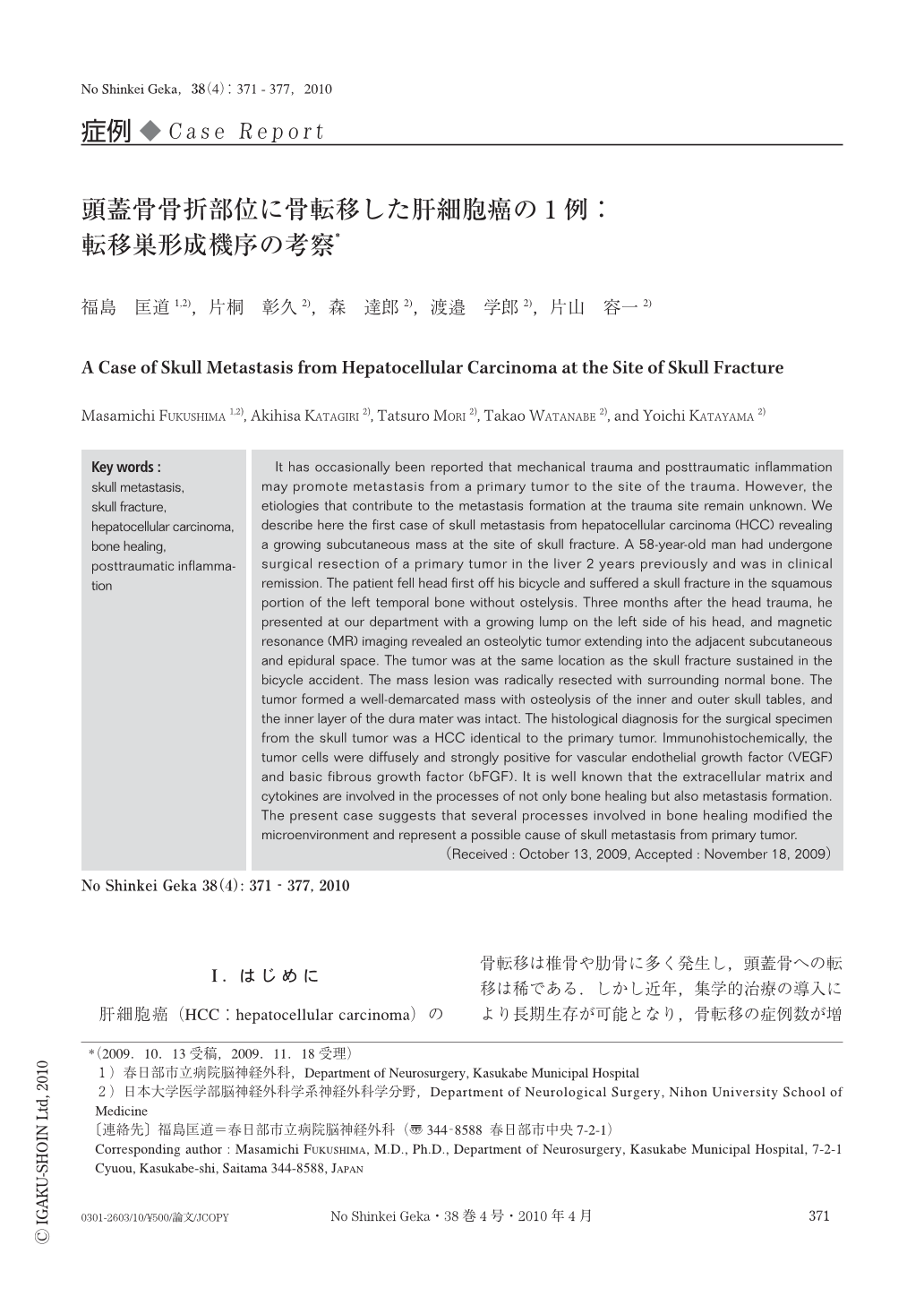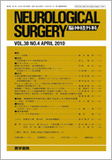Japanese
English
- 有料閲覧
- Abstract 文献概要
- 1ページ目 Look Inside
- 参考文献 Reference
Ⅰ.はじめに
肝細胞癌(HCC:hepatocellular carcinoma)の骨転移は椎骨や肋骨に多く発生し,頭蓋骨への転移は稀である.しかし近年,集学的治療の導入により長期生存が可能となり,骨転移の症例数が増加傾向にある.今後,頭蓋骨転移例に対して,脳神経外科医がHCCの治療に参加する機会に遭遇するであろう.われわれは,頭蓋骨骨折の局所に骨転移を起こし,急速に増大したHCCの1例を経験した.頭蓋骨骨折部位に転移した報告は自験例のみであり,その病態について文献的考察を加え報告する.
It has occasionally been reported that mechanical trauma and posttraumatic inflammation may promote metastasis from a primary tumor to the site of the trauma. However,the etiologies that contribute to the metastasis formation at the trauma site remain unknown. We describe here the first case of skull metastasis from hepatocellular carcinoma (HCC) revealing a growing subcutaneous mass at the site of skull fracture. A 58-year-old man had undergone surgical resection of a primary tumor in the liver 2 years previously and was in clinical remission. The patient fell head first off his bicycle and suffered a skull fracture in the squamous portion of the left temporal bone without ostelysis. Three months after the head trauma,he presented at our department with a growing lump on the left side of his head,and magnetic resonance (MR) imaging revealed an osteolytic tumor extending into the adjacent subcutaneous and epidural space. The tumor was at the same location as the skull fracture sustained in the bicycle accident. The mass lesion was radically resected with surrounding normal bone. The tumor formed a well-demarcated mass with osteolysis of the inner and outer skull tables,and the inner layer of the dura mater was intact. The histological diagnosis for the surgical specimen from the skull tumor was a HCC identical to the primary tumor. Immunohistochemically,the tumor cells were diffusely and strongly positive for vascular endothelial growth factor (VEGF) and basic fibrous growth factor (bFGF). It is well known that the extracellular matrix and cytokines are involved in the processes of not only bone healing but also metastasis formation. The present case suggests that several processes involved in bone healing modified the microenvironment and represent a possible cause of skull metastasis from primary tumor.

Copyright © 2010, Igaku-Shoin Ltd. All rights reserved.


